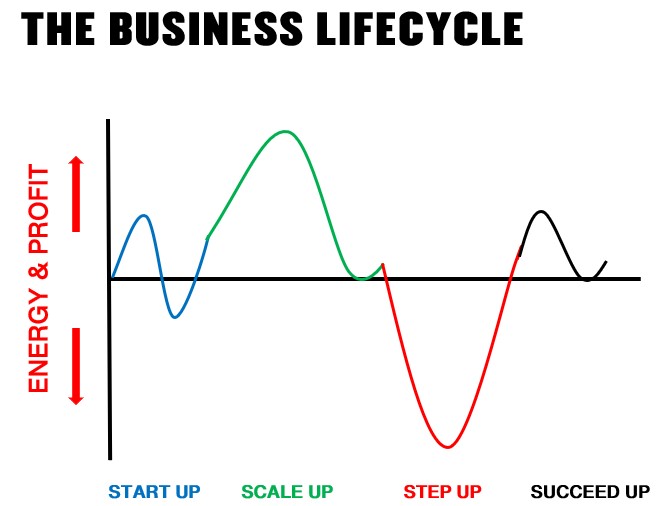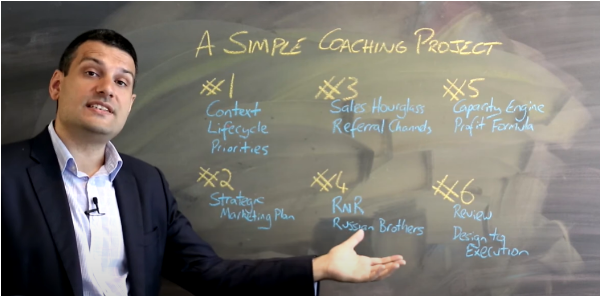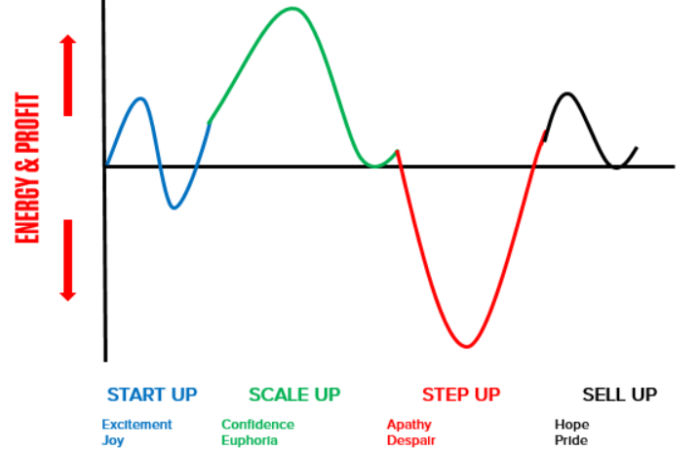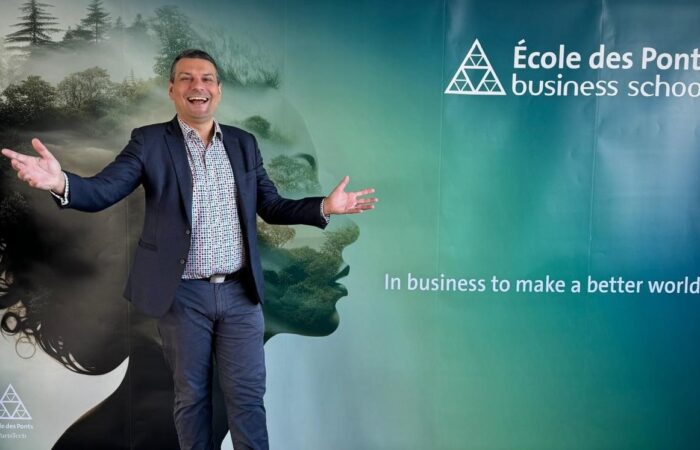Introducing the Business Lifecycle. In Blackboard Fridays Episode 1, Jacob talks about Business Lifecyle. Need this implemented into your business? Talk to the international business advisor who can do exactly that – Contact Jacob, Learn More, or Subscribe for Updates.
WHO IS JACOB ALDRIDGE, BUSINESS COACH?
“The smart and quirky advisor who gets sh!t done in business.”
Since April 2006, I’ve been an international business advisor providing bespoke solutions for privately-owned businesses with 12-96 employees.
At this stage you have proven your business model, but you’re struggling to turn aspirations into day-to-day reality. You are still responsible for all 28 areas of your business, but you don’t have the time or budget to hire 28 different experts.
You need 1 person you can trust who can show you how everything in your business is connected, and which areas to prioritize first.
That’s me.
Learn more here. Or Let’s chat.
TRANSCRIPT
Hi! I’m Jacob Aldridge, international business coach since 2006 and a former Director of Strategic Advisory at businessDEPOT (2016-2019). This is the first in a series of videos done in partnership with the awesome team at businessDEPOT that we call “Blackboard Fridays“.
Speedbumps, Hurdles, and Brick Walls: We Know the Roadmap
In today’s video, I’m talking about “Speedbumps, Hurdles, and Brick Walls”, the impediments that business owners’ experience as they go through their business journey. The “Business Lifecycle” framework is one of the most important in my business advisory toolkit, and including specific depth it covers 8 videos in the Blackboard Fridays series.

Chatty G, Content Marketing, and Too. Much. Stuff.
One of the challenges for today’s business owners is the abundance of information and advice that exists, either from experts who have access to the internet … or people who think they are experts and have access to the internet … or Generative AI platforms that have read both groups (and often regurgitate their information without being able to tell the difference).
Twenty years ago when I was starting my career, it was much harder to get good business advice. Now the challenge is knowing which information to apply, because most of the content online lacks two key elements:
- An understanding of your personal vision, including how big you want to grow this business. Are you trying to create a multinational, multi-generational business … or are you looking for a lifestyle business that let’s you work part time and travel the world with your family?
- An awareness of where you are on your business lifecycle journey. Your business journey will have a massive impact as to whether the strategies you design and implement work or fail, and what is excellent for a business at one point can be disastrous for a similar business at a different stage.
So, do you know where you are along your journey? Let’s walk through it quite briefly as we go through the journey of business.
The Start Up Phase of Business
As you can see in the framework diagram above, energetically both the owner and the business will go through periods and waves where they’re UP ENERGY (exuberant, excited about the business) or DOWN ENERGY (feeling a little bit more introspective or perhaps even stress, concerned or apathetic about the business).
This follows a general pattern in the Start-Up Phase. The energy starts off by climbing high: we’re excited, we’re venturing out into a new process, we’ve got business partners, or start-up capital.
There’s a lot of cash and other energy coming in to help us build the energy.
Unfortunately, that initial excitement doesn’t last. We hit what I call “a speedbump”. Now, the problem with speed bumps isn’t that they’re massive and significant obstacles: but if you don’t approach them with sufficient speed, you can’t get over them.
In fact, statistics in both Australia and the UK where I do most of my coaching work show that 50% of businesses that are started have failed within the first three years. The speedbump at the end of Start-Up, before transitioning into the next phase, is where they die. Those businesses don’t get the momentum they need to get through, and so excitement turns into anxiety, uncertainty, and eventually a desire to shut down business.
Importantly, those feelings are a normal part of the business lifecycle. Feeling anxious about your Start-Up does not mean it will fail … for the 50% that do survive and thrive, this feeling is a commitment point where you now understand what investments and changes you need to make in your business to ensure it is self-supporting and can scale.
The Scale Up Phase of Business
The businesses that make it through, get their business model right, will move into the Scale-Up phase. This is where growth in both revenue and profit starts to become a whole lot easier – look at how the energy curve begins to climb again.
Each month is better than the previous month. Clients are now coming to you instead of you having to chase them. This is a phase that can last a decade, it feels fantastic, and it feels like it will never end.
But unfortunately it does. As we reach the pinnacle of this journey, we achieved the initial vision that we set out to achieve. It may be five, eight, or ten years since startup and we finally realized the success that we wanted to – commercially for ourselves, culturally for the business, or maybe even changing the industry or the world.
Once you’ve achieved that, the challenges of the business start to build. Your energy will take a dip. This is the hurdle where many business owners can stumble temporarily. With all that momentum you reach the hurdle at speed – whether you manage to jump it or run straight through it you can keep going. Some businesses, however, do implode at the end of this phase.
The Step-Up Phase of Business
For those that survive, they move into the Step-Up Phase. This is the challenge, the deepest down energy phase, and I call it Step Up because what I’m encouraging you to do as the business owner or a CEO is step up and face the new challenges that the business is experiencing.
The energy for you and across the whole business will move down here into this negative territory. It’s not necessarily negative in terms of “bad”, it’s negative in terms of necessitating change. One of the hardest things you can do as a leader with the organization is look at things that maybe used to work but no longer work and change them; for example, change the systems, the processes, and the people.
The Succeed Up Phase of Business
Your business can successfully navigate this brick wall. If you do so, you will become one of the top 5% of businesses in the country. Half of all businesses don’t get past that speed bump. The ones that make it through the brick wall of Step-Up are in the minority!
What they get to do is choose:
- Do you choose to sell up the business from a place of success, knowing that you’re handing the buyer of the business or the next generation in your family are thriving ongoing enterprise that doesn’t depend on you?
- Or do you make a different choice? You may feel based on your career, or just your energy in the excitement that you’ve got in front of you but rather than selling the business here and exiting you might take on funding or even out of cash flow decide to go through this cycle again at a much larger and bigger opportunity.
Where Are You in the Business Lifecycle?
Understanding where you are along this journey, and it is an energetic and emotional journey as much as it is around revenue and profit, gives you an idea of what you need to be developing.
In my next video, I’m going to walk you through the Top 3 Priorities that businesses in each of those four phases need to review and implement.
I hope from reading this article that you have a better understanding of where your business is in its journey: the journey that you’ve gone on and what you’re facing next.
Most importantly, you now have an additional contextual tool for filtering advice that you receive – especially from the web, AI helpers, and even other business owners who may be in a different phase in their lifecycle.
NEXT STEPS
Want to learn more about how this can apply to your business? It costs nothing to chat:
- Email me jacob@jacobaldridge.com (I read them all)
- Call, Text, or WhatsApp me +61 427 151 181
- Or just Subscribe https://jacobaldridge.com/about/subscribe-to-jacob-aldridge-com/ to stay in touch





[…] None, of course. I was never going to win a client, sell my books, or even have someone explore my amazing video library because one day they were on Google pondering a battle between a flappy humanoid figure full of hot […]
[…] Episode 1, Introducing the Business Lifecycle – https://jacobaldridge.com/business/introducing-the-business-lifecycle/ […]
[…] the lifecycle sits atop ‘The businessDEPOT Way’ and was the topic of #BlackboardFridays Episode 1 way back in 2016. […]
[…] you want more details on exactly where your business is on its Lifecycle, enjoy watching Episodes 1 and 2 here. And if you want to learn more about the emotional rollercoaster and strategic […]
[…] You can use whatever colours you want – but notice how these colours fit into the system with the Momentum Meeting Schedule from episode 37, the Roles & Responsibilities we discussed in episodes 7 – 9, and all the way back to the Business Lifecycle that is so critical it was the focus of Blackboard Fridays Episode 1. […]